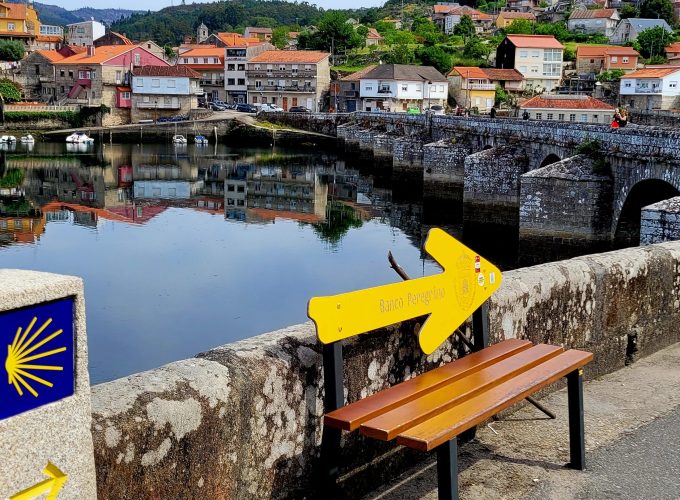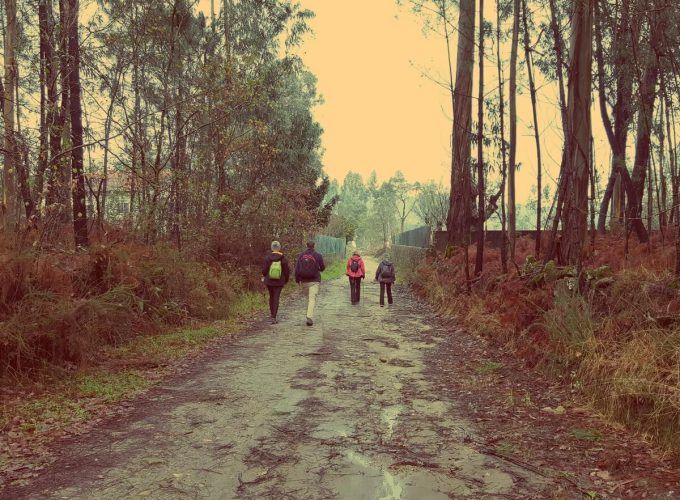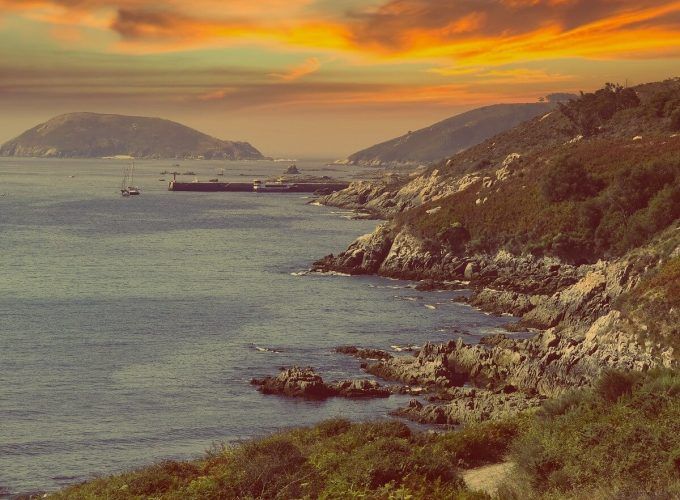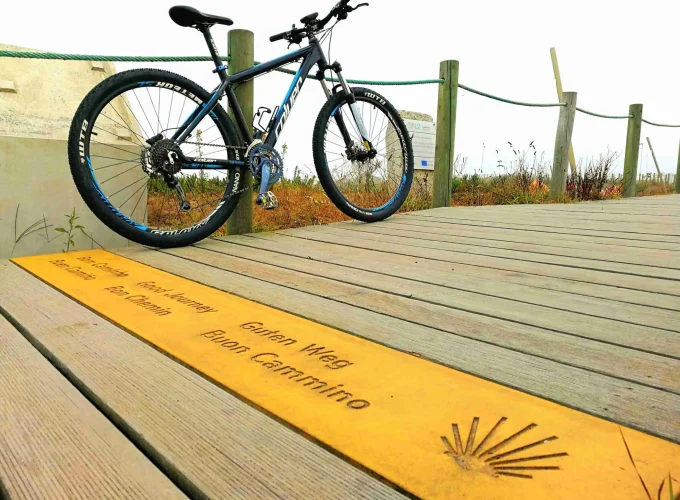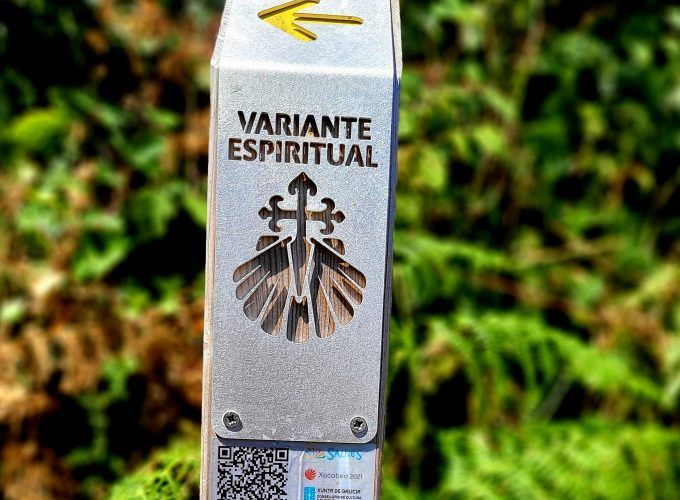The Camino Portugués, after the Camino Francés, the most popular Camino de Santiago route. This breathtaking pilgrimage can be walked along the beautiful coast and is famous for its rural experience. During the Camino Portugués you will enjoy the best of both worlds, the best of Spain and Portugal and its delicious local cuisine, good facilities along the way and an excellent signposted route.
The Camino Portugués starts in Portugal. Most of pilgrims choose to start in Porto from where several options can be followed: the central route, the coastal route or the spiritual. The central pilgrimage route is the most frequently walked. This is the traditionally oldest pilgrimage route in Portugal.
Portugal Pilgrimage
Historically, pilgrims from Portugal, particularly Lisbon and Porto, traditionally followed this route. These two magnificent UNESCO World Heritage cities continue to be prominent starting locations for the Camino Portugués. However, you have the flexibility to commence your pilgrimage from any point along the route. Feel free to ask for some more information about the possibilities for this Camino de Santiago route.
Along the Camino Portugués you will traverse stunning coastal areas, lush forests, quaint, historical villages such as Santarém, Coimbra and Porto and picturesque landscapes. During this pilgrimage road through Portugal you can immerse yourself in the rich cultural tapestry of the Iberian Peninsula. It’s an opportunity to explore historical sites, savor delicious regional cuisines, and engage with the warm-hearted people encountered along the way to the final destination: Santiago de Compostela.
Throughout this Camino the Santiago the characteristics, warm welcomes pilgrims receive haven’t changed at all.This tradition was started in the Middle Ages by monks and clerics serving hospitals founded by monarchs and the nobility. Nowadays, this legendy, this tradition is maintained during the pilgrimage. Bon Caminho! is what you will hear a lot and makes your Camino Portugués experience even more special.
Portuguese camino
The Camino Portugués, also known as the Portuguese Way, is a fascinating Camino de Santiago route focusing on natural beauty, rich history and spiritual exploration. Stretching from Portugal into Spain, this ancient pilgrimage offers a remarkable experience where you can enjoy the best of both worlds.
Camino Portugués coastal route
In the quaint Portuguese city of Porto, where the Douro River meets the Atlantic Ocean, this pilgrimage begins. This is the starting point of the Camino Portugués coastal Route, a walking trail that leads intrepid souls along the breathtaking coastline to the hallowed grounds of Santiago de Compostela.
With the iconic Ribeira district fading into the horizon, start your journey, following the coastal path. The scent of sea salt fills the air as the route meanders along golden beaches, through charming fishing villages, and past historic lighthouses. Continuing with the azure Atlantic Ocean as a constant companion. You cross the Rio Neiva on a Roman bridge and feel the weight of history under your feet.
Viana do Castelo, considered a jewel on the Portuguese coast, awaits you. The Camino Portugués takes you inland for a while, but the reward is panoramic views of the city and the shimmering sea beyond. Also be sure to explore Viana’s historic center, where quaint squares and colorful facades reveal stories from centuries gone by.
After all the Portuguese splendour, you continue to the Spanish coast. You cross the Minho River and enter Galicia. The town of A Guarda has a rich history, with a Celtic hill fort and the iconic Mount Santa Trega offering panoramic views of the sea.
The Camino Portugués route continues through picturesque Galician villages and coastal landscapes. Oia, with its beautiful Cistercian monastery overlooking the sea, offers a place of contemplation and tranquility. Baiona, is a coastal gem and welcomes pilgrims with its medieval fortress and charming streets.
Slowly you approach Vigo, the largest city on this route. As the landscape transitions from coastal paths to city streets, you will discover the bustling heart of Galicia. A visit to Castro Fortress rewards with panoramic views over the bay.
Pontevedra, a city of squares and churches, also beckons with its historical richness. The Camino Portugués leads you through the heart of the old town, where cobbled streets lead to hidden treasures.
With the final destination Santiago de Compostela approaching, the Camino Portugués route continues through the verdant Galician countryside, where hot springs await in Caldas de Reis. Here you can soak your tired bones in the therapeutic waters.
The town of Padrón, should not be missed during your experience. This village is full of legend and history. Here, the chapel of St James is said to be the apostle’s first resting place. And don’t forget to taste the famous ‘Pimientos de Padron’.
The last stage of the camino unfolds, leading to the final destination: Santiago de Compostela. You join the Camino Francés and join other pilgrims on their way to Santiago’s majestic cathedral. As you enter the Plaza de Quintana, the highlight of your pilgrimage, a deep sense of accomplishment overwhelms you. This is the end of your Camino Portugués coastal route.
Camino Espiritual
In the quiet town of Tui, where the Minho River flows gently and the old stone walls whisper stories of centuries ago, your Camino Portugués begins with Santiago de Compostela as your final destination. A route that winds through the heart of Galicia. Where gentle rustle of leaves in the forest and the camaraderie of fellow pilgrims set the tone for the days ahead.
Leaving the village of O Porrino the route crosses the old Roman bridge at Ponte Sampaio, a place where history mixes with spirituality. Pontevedra, a town of stone churches and cobbled streets, also has its own history. Here the spirit of St. James pervades every corner; from the picturesque squares to the great basilicas.
The landscape changes to rolling hills and lush forests as the route approaches Caldas de Reis. The city’s thermal springs provide a soothing retreat, a place to rejuvenate body and mind. The Camino Portugués continues to Padrón. This village is full of legend and history. Here, the chapel of St James is said to be the apostle ‘s first resting place. And don’t forget to taste the famous ‘Pimientos de Padron’.
During the last part of this Camino de Santiago route, the towering spiers of the cathedral come into view and your heart beats with anticipation. As you enter the Plaza de Quintana, the highlight of your pilgrimage, a deep sense of accomplishment overwhelms you. This is the end of your Camino Portugués coastal route.


